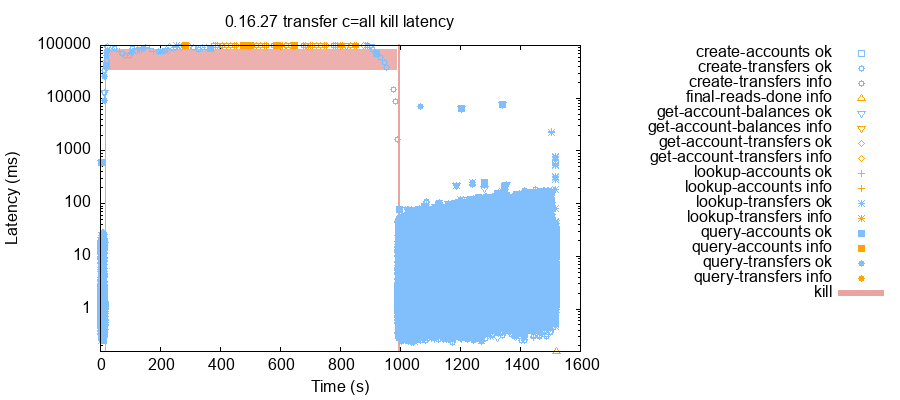Show HN: Claude Composer
Claude Composer CLI
A tool for enhancing Claude Code
What is Claude Composer?
Claude Composer is a CLI wrapper for Claude Code that adds small enhancements around automation, UX, and configuration.
- Reduced interruptions: Automatically handles permission dialogs based on configurable rules
- Flexible control: Rulesets let you define exactly which actions to allow automatically
- Tool management: Toolsets simplify configuring which tools Claude can use
- Enhanced visibility: System notifications keep you informed without switching contexts
Table of Contents
Quick Start
Installation
npm install -g claude-composer # or yarn global add claude-composer # or pnpm add -g claude-composer
Basic Usage
# Initialize global configuration claude-composer cc-init # Start Claude Code with automatic dialog dismissal claude-composer # Uses the ruleset configured during cc-init # Use a more permissive ruleset claude-composer --ruleset internal:yolo
Installation & Setup
See docs/installation.md for detailed installation instructions.
Prerequisites
- Node.js 18 or higher
- npm, yarn, or pnpm package manager
- Claude Code installed and configured
Installation
Install Claude Composer globally:
pnpm add -g claude-composer
Or with other package managers:
yarn global add claude-composer npm install -g claude-composer
Initial Configuration
Run claude-composer cc-init to create your initial configuration:
# Create global configuration (default) claude-composer cc-init # Or create project-specific configuration claude-composer cc-init --project
Global Configuration
By default, claude-composer cc-init creates a global configuration that applies to all projects:
- Configuration location:
~/.claude-composer/config.yaml - Interactive prompts for ruleset and toolset selection
- Applies to all Claude Composer invocations unless overridden
Project Configuration
Use claude-composer cc-init --project to create a project-specific configuration:
- Creates
.claude-composer/config.yamlin current directory - Takes precedence over global configuration when present
- Ideal for project-specific rules and tool settings
Directory Structure
Global configuration:
~/.claude-composer/
├── config.yaml # Global configuration
├── rulesets/ # Custom global rulesets (unprefixed)
│ ├── my-workflow.yaml
│ └── backend-dev.yaml
└── toolsets/ # Custom global toolsets (unprefixed)
├── my-tools.yaml
└── web-dev.yaml
Project configuration (with --project):
your-project/
├── .claude-composer/
│ ├── config.yaml # Project configuration
│ ├── rulesets/ # Custom project rulesets
│ └── toolsets/ # Custom project toolsets
└── ... (your project files)
Basic Usage
Command Structure
claude-composer [claude-composer-options] [claude-code-args]
Claude Composer acts as a wrapper around Claude Code, passing through all supported arguments to Claude Code.
Common Workflows
Using Configuration Files
# Use global configuration claude-composer # Use project configuration (if present) cd your-project claude-composer # Override with specific ruleset claude-composer --ruleset internal:safe
Passing Arguments to Claude Code
# Pass model selection to Claude Code claude-composer --model claude-3-opus-20240229 # Combine composer options with Claude Code args claude-composer --ruleset internal:yolo --model claude-3-opus-20240229
Working with Different Rulesets
# Safe mode - all dialogs require confirmation claude-composer --ruleset internal:safe # Cautious mode - auto-accept project-level operations claude-composer --ruleset internal:cautious # YOLO mode - auto-accept all operations claude-composer --ruleset internal:yolo # Global custom ruleset (no prefix needed) claude-composer --ruleset my-workflow # Project-specific ruleset claude-composer --ruleset project:my-custom-rules # Chain multiple rulesets claude-composer --ruleset internal:safe --ruleset my-overrides
Examples
See docs/examples.md for more usage examples and advanced workflows.
Starting a new project
mkdir my-project && cd my-project claude-composer cc-init --project claude-composer # Uses the configuration created by cc-init
YOLO
# Use YOLO mode if you are truly living in the moment
claude-composer --ruleset internal:yolo
Safe AF
# This effectively disables accepting all confirmations
claude-composer --ruleset internal:safe
With custom toolsets
# Enable built-in tools claude-composer --toolset internal:core --ruleset internal:cautious # Use global custom toolset claude-composer --toolset my-tools --ruleset my-workflow
Configuration
Claude Composer uses YAML configuration files to define behavior. Configuration is loaded from multiple sources with the following precedence (highest to lowest):
- Command-line flags
- Project configuration (
.claude-composer/config.yaml) - Global configuration (
~/.claude-composer/config.yaml) - Built-in defaults
Configuration File Locations
- Global:
~/.claude-composer/config.yaml - Project:
.claude-composer/config.yaml - Custom rulesets:
{config-dir}/rulesets/*.yaml - Custom toolsets:
{config-dir}/toolsets/*.yaml
Basic Configuration Options
# Rulesets to apply (in order) rulesets: - internal:cautious # Built-in ruleset - my-defaults # Global custom ruleset - project:custom-rules # Project-specific ruleset # Toolsets to enable toolsets: - internal:core # Built-in toolset - development-tools # Global custom toolset - project:my-tools # Project-specific toolset # Trusted root directories roots: - ~/projects/work - ~/projects/personal # UI preferences show_notifications: true sticky_notifications: false
See docs/configuration.md for comprehensive configuration documentation.
Environment Variables
Claude Composer supports environment variables for configuration:
CLAUDE_COMPOSER_CONFIG_DIR- Override config directory locationCLAUDE_COMPOSER_NO_NOTIFY- Disable all notificationsFORCE_COLOR- Control color output
See docs/environment-variables.md for details.
Roots Configuration
Roots define trusted parent directories where Claude Code's initial trust prompt is automatically accepted. See docs/roots-config.md for detailed configuration options.
roots: - ~/projects # Trust direct children of ~/projects - /tmp/sandbox # Trust direct children of /tmp/sandbox - $WORK_DIR/repos # Environment variable expansion supported
When you start Claude Composer in a directory whose parent is listed in roots:
- The "Do you trust the files in this folder?" prompt is automatically accepted
- The automatic acceptance confirmation prompt is suppressed
Important: Only direct children of root directories are trusted. For example, if ~/projects is a root, then ~/projects/my-app is trusted, but ~/projects/my-app/src is not.
Rulesets
Rulesets control which permission dialogs are automatically accepted or rejected. They provide fine-grained control over Claude Code's interactions with your system.
What are Rulesets?
Rulesets are YAML files that define:
- Which dialogs to automatically accept or reject
- Path-based rules for file and directory operations
- Pattern-based command filtering
- Domain allowlists for web requests
Internal Rulesets
Claude Composer includes three built-in rulesets. See docs/internal-rulesets.md for detailed information about each ruleset.
internal:safe
Maximum security - all dialogs require manual confirmation. No automatic acceptance of any operations.
internal:cautious
Balanced approach - automatically accepts project-level operations (file edits, creates, bash commands) while requiring confirmation for global operations and web requests.
internal:yolo
Maximum automation - accepts all operations without confirmation, including global file operations and web requests. Use with caution.
See docs/rulesets.md for detailed ruleset documentation and creating custom rulesets.
Project-Level Rulesets
Create custom rulesets in your project's .claude-composer/rulesets/ directory:
# .claude-composer/rulesets/backend.yaml name: backend description: Rules for backend development # Accept file operations with path restrictions accept_project_edit_file_prompts: paths: - 'src/**/*.js' - 'src/**/*.ts' - 'test/**' - '!**/*.env' accept_project_bash_command_prompts: true accept_fetch_content_prompts: false
Using Rulesets
# Use internal ruleset claude-composer --ruleset internal:cautious # Use global custom ruleset (no prefix) claude-composer --ruleset my-workflow # Use project ruleset claude-composer --ruleset project:backend # Chain multiple rulesets (later rules override earlier) claude-composer --ruleset internal:cautious --ruleset my-defaults --ruleset project:backend
Creating Custom Rulesets
Custom rulesets allow fine-grained control over automation. See docs/rulesets.md for complete syntax and examples.
Toolsets
Toolsets control which tools Claude can use and configure MCP (Model Context Protocol) servers. They provide a flexible way to manage Claude's capabilities on a per-project or global basis.
What are Toolsets?
Toolsets are YAML files that define:
- Which tools Claude is allowed to use
- Which tools Claude is explicitly blocked from using
- MCP server configurations for additional tool capabilities
Internal Toolsets
Claude Composer includes one built-in toolset. See docs/internal-toolsets.md for detailed information.
internal:core
Provides access to Context7 documentation tools, allowing Claude to fetch up-to-date library documentation.
Project-Level Toolsets
Create custom toolsets in your project's .claude-composer/toolsets/ directory:
# .claude-composer/toolsets/dev-tools.yaml allowed: - Read - Write - Edit - MultiEdit - Bash disallowed: - WebSearch mcp: my-server: type: stdio command: node args: - ./tools/mcp-server.js
Using Toolsets
# Use internal toolset claude-composer --toolset internal:core # Use global custom toolset (no prefix) claude-composer --toolset my-tools # Use project toolset claude-composer --toolset project:dev-tools # Chain multiple toolsets claude-composer --toolset internal:core --toolset project:backend-tools
Creating Custom Toolsets
Toolsets control which tools Claude can use and configure MCP servers. See docs/toolsets.md for complete documentation.
Command Line Options
See docs/cli-reference.md for complete command line documentation.
Core Options
Configuration
--ruleset- Use specified rulesets (can be used multiple times)--toolset- Use specified toolsets (can be used multiple times)--ignore-global-config- Ignore global configuration file
Safety
--dangerously-allow-in-dirty-directory- Allow running with uncommitted git changes--dangerously-allow-without-version-control- Allow running outside version control--dangerously-suppress-automatic-acceptance-confirmation- Skip confirmation prompts
Notifications
--show-notifications/--no-show-notifications- Enable/disable desktop notifications--sticky-notifications/--no-sticky-notifications- Make notifications stay until dismissed--show-work-complete-notifications/--no-show-work-complete-notifications- Show/hide work completion notifications
Debug
--quiet- Suppress preflight messages--allow-buffer-snapshots- Enable Ctrl+Shift+S terminal snapshots--log-all-pattern-matches- Log pattern matches to~/.claude-composer/logs/
Subcommands
cc-init
Initialize a new configuration file:
# Create global config claude-composer cc-init # Create project config claude-composer cc-init --project # Specify ruleset during init claude-composer cc-init --use-cautious-ruleset
Options:
--project- Create config in current directory--use-yolo-ruleset- Use YOLO ruleset--use-cautious-ruleset- Use cautious ruleset (recommended)--use-safe-ruleset- Use safe ruleset--use-core-toolset/--no-use-core-toolset- Enable/disable core toolset
Pass-through Options
All unrecognized options are passed to Claude Code:
# These go to Claude Code claude-composer --model claude-3-opus-20240229 claude-composer --print claude-composer --help # Shows both claude-composer and claude help
Advanced Notification Controls
Fine-tune which notifications appear:
# Control specific notification types
claude-composer --no-show-edit-file-confirm-notify
claude-composer --show-accepted-confirm-notify
claude-composer --sticky-work-complete-notifications
See docs/notifications.md for detailed notification configuration.
Development
Contributing
Contributions are welcome! Please:
- Fork the repository
- Create a feature branch (
git checkout -b feature/amazing-feature) - Commit your changes (
git commit -m 'Add amazing feature') - Push to the branch (
git push origin feature/amazing-feature) - Open a Pull Request
Release Process
This project uses automated releases via npm and GitHub. See docs/release-process.md for detailed release instructions.
Quick release commands:
npm run release:patch # Bug fixes (0.1.0 → 0.1.1) npm run release:minor # New features (0.1.0 → 0.2.0) npm run release:major # Breaking changes (0.1.0 → 1.0.0)
What's Your Reaction?
 Like
0
Like
0
 Dislike
0
Dislike
0
 Love
0
Love
0
 Funny
0
Funny
0
 Angry
0
Angry
0
 Sad
0
Sad
0
 Wow
0
Wow
0












































